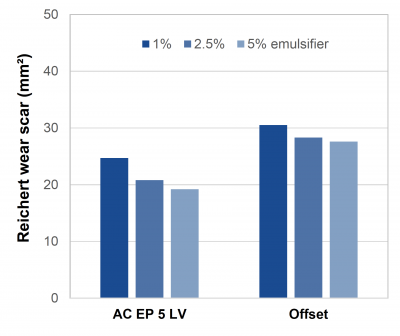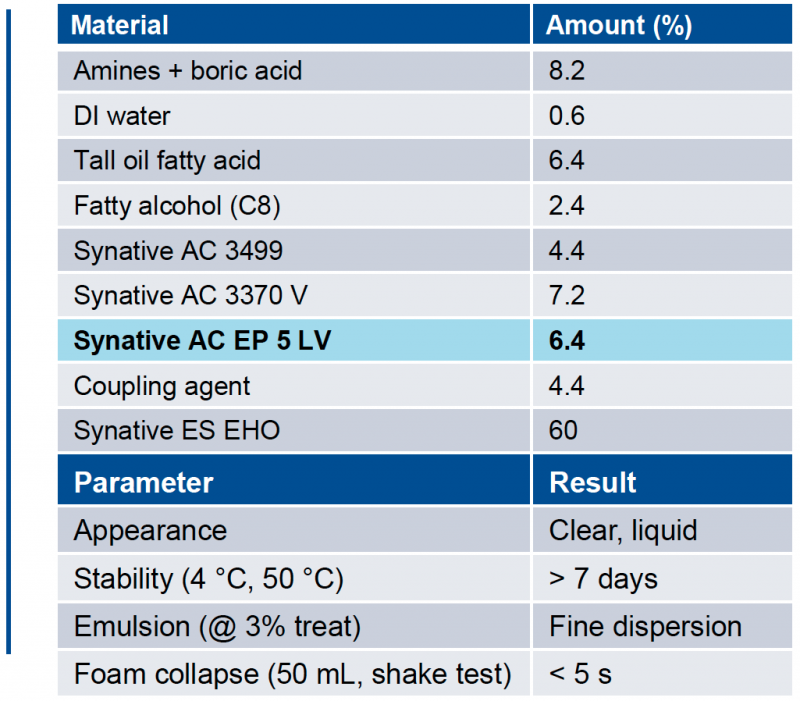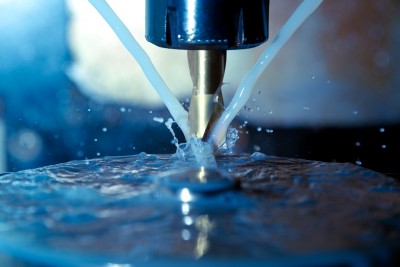
Renewable Low-Foaming Emulsifier Offers Multiple Benefits
In water miscible or extendible metalworking formulations, the selection of emulsifier is crucial for achieving optimal production efficiencies and final lubricant performance. Add the challenge of increasing demand for sustainable products and renewable raw materials, and suddenly there are a lot of elements to consider. Luckily, the demand to “go greener” can be met without compromise using renewable based surfactants that offer performance benefits such as low foam, emulsification, and added lubricity.
The Solution
Synative® AC EP 5 LV is a fatty alcohol (cetyl oleyl) ethoxylate based on vegetable raw materials. It is widely used as an emulsifier component for water-miscible MWF concentrates; both soluble oils and semi synthetic . Despite its high hydrophilicity, Synative AC EP 5 LV shows excellent low-temperature behavior offering both a low pour point and low viscosity. It is suitable for boron-containing or boron-free formulations for hard and soft-water applications. It is most effective when used in combination with Synative® AC emulsifiers with low HLB values such as Synative® AC 3370 V.


Performance Highlights

Synative AC EP 5 LV demonstrates improved lubricity over similar offset1
- Low foaming, stable in hard water
- Based on renewable raw materials
- Good emulsification
- High solubility in concentrates
- Added lubricity
- High hydrophilicity
- Miscible with anionic and cationic surfactants
Synative AC EP 5 LV is an excellent choice if you are in need of a more sustainable surfactant/emulsifier for your water extendible metalworking formulation. Synative AC EP 5 LV will also offers a low foaming profile with excellent hard water stability.
Frame Formulation*

*The above frame formulation is not intended to be a complete formulation for a water-miscible MWF

